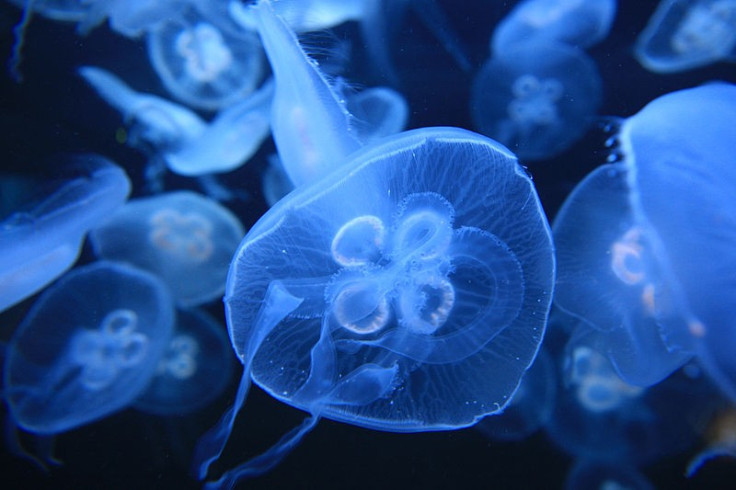Sweden: Mass of Jellyfish Shuts Down One of World's Biggest Nuclear Reactors

One of the world's biggest nuclear power plants has been forced to shut down after being hit by a wave of jellyfish.
Workers at the Oskarshamn nuclear plant in southeastern Sweden had to scramble its reactor number three after jellyfish clogged the pipes bringing cool water to the plant's turbines.
The reactor that was shut down is the largest boiling water reactor in the world, said Anders Osterberg, a spokesman for plant operator OKG.
Tonnes of jellyfish had become clogged inside the pipes at the weekend and management said they shut down the reactor as a "preventative safety measure" to ensure the unit did not automatically shut down because of the cooling in the condenser getting too low.
"The function of the cooling water in the condenser is to cool down the steam so that it is reformed in to water again, and subsequently brought in to the reactor vessel," a company statement said.
"This cooling water has no connection to the cooling of the reactor vessel."
Jellyfish have now been cleared from the pipes and engineers are preparing to restart the reactor.

Reactors at Oskharshamn are the same as those in Japan's Fukushima Daiichi plant, which suffered a massive failure in 2011 following the tsunami which engulfed the facility and flooded its equiptment.
Marine biologists warned the jellyfish problem encountered in Sweden could become more common in the future.
Last year a similar problem occurred at the Diablo Canyon facility in California. The plant was forced to shut its reactor after sea salp, a jellyfish-like organism, clogged the pipes. Oskharshamn also shut in 2005 because of a rise in jellyfish numbers.
Lene Moller, a researcher at the Swedish Institute for the Marine Environment, said: "It's true that there seems to be more and more of these extreme cases of blooming jellyfish. But it's very difficult to say if there are more jellyfish, because there is no historical data."
She said the species that clogged Oskharshamn's pipes was the common moon jellyfish: "It's one of the species that can bloom in extreme areas that are overfished or have bad conditions.
"The moon jelly likes these types of waters. They don't care if there are algae blooms, they don't care if the oxygen concentration is low. The fish leave . . . and [the moon jelly] can really take over the ecosystem."
© Copyright IBTimes 2024. All rights reserved.























